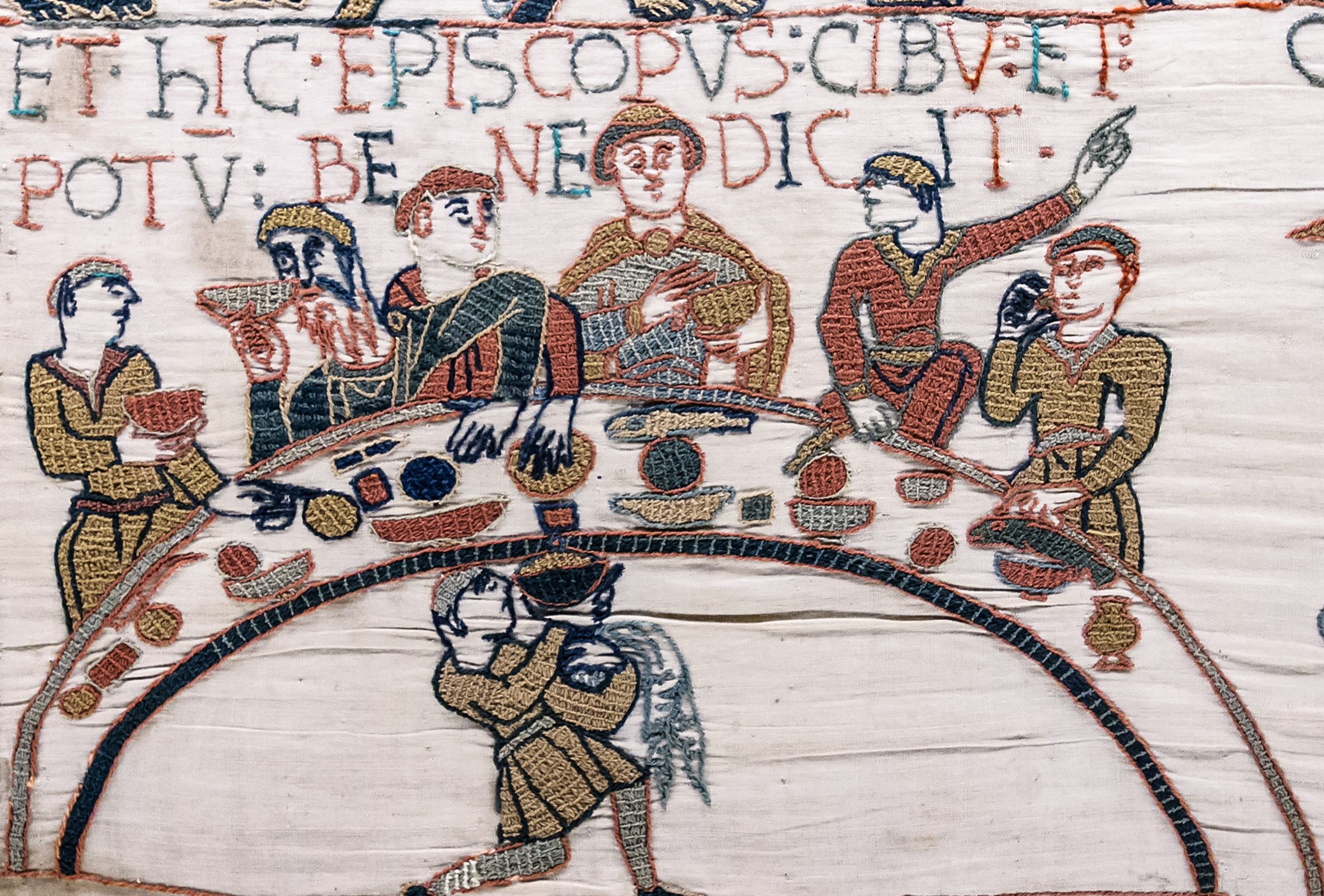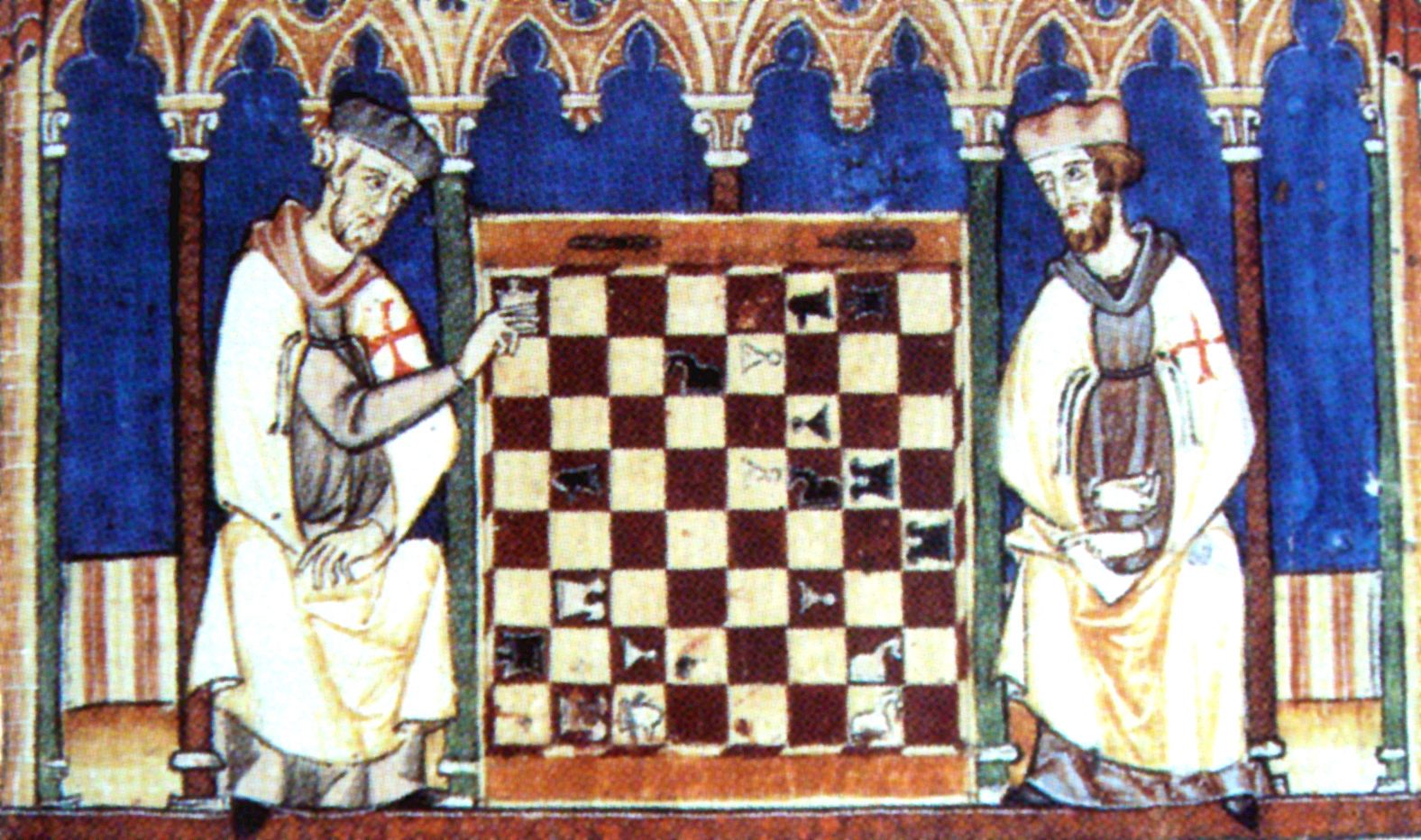How a Special Diet Kept the Knights Templar Fighting Fit
Silent meals, a buddy system, and wine “in moderation.”

Graybeards were thin on the ground in the 13th century. For even wealthy landholding males, average life expectancy was about 31 years, rising to 48 years for those who made it to their twenties. The Knights Templar, then, must have seemed to have some magical potion: Many members of this Catholic military order lived long past 60. And even then, they often died at the hands of their enemies, rather than from illness.
In 1314, Jacques de Molay, the order’s final Grand Master, was burned alive at the age of 70. Geoffrei de Charney, who was executed in the same year, is usually said to have been around 63. This longevity seems to have been almost commonplace. Fellow Grand Masters Thibaud Gaudin, Hugues de Payens, and Armand de Périgord, to name just a few, all lived into their sixties. For the times, this would have been positively geriatric.
“The exceptional longevity of Templar Knights was generally attributed to a special divine gift,” writes the Catholic scholar Francesco Franceschi in a journal article about their salubrious practices. But modern research suggests an alternative: The order’s compulsory dietary rules may have contributed to their long lives and good health.
Contrary to many modern portrayals, the Knights seem to have lived genuinely humble lives, in service to God. Their dietary choices and obligations reflect this. Though the order grew rich from carefully handled donations and by safeguarding traveling pilgrims’ money, the men themselves took formal vows of poverty, chastity, and obedience. They were not permitted even to speak to women. For nearly 200 years, the order thrived across Europe, peaking at around 15,000 members by the end of the 13th century. Most of all, they were expert warriors, and their ranks comprised some of the best fighters, warriors, and jousters in the world.

Early in the 12th century, the French abbot Bérnard de Clairvaux helped assemble a long and complex list of rules, which structured the knights’ lives. This rulebook became known as the Primitive Rule of the Templars, and drew from the teachings of the saints Augustine and Benedict. But many of the rules originated in the order. Though the document was completed in 1129, writes Judith Upton-Ward, the Templar Knights had already been in existence for several years, “and had built up its own traditions and customs … To a considerable extent, then, the Primitive Rule is based upon existing practices.”
The rules were many, and various. The knights were to protect orphans, widows, and churches; eschew the company of “obviously excommunicated” men; and not stand up in church when praying or singing. Even sumptuary laws prioritized humbleness: Their monk’s habits were one color alone, though on warm days between Easter and Halloween, the rules decreed, they were allowed to wear a linen shirt. (Pointed shoes were always forbidden.) But the rules also extended into their dietary practices: How they ate, what they ate, and who they ate with.
Their meals do not seem to have been raucous affairs. Knights were obliged to eat together, but to do so silently. If they needed the salt, they had to ask for it to be passed “quietly and privately … with all humility and submission.” A sort of buddy system existed, partly due to a mystifying “shortage of bowls.” This may have been more a show of abstinence than anything else, like the knights’ emblem, which was of two men sharing a horse.
Knights ate in pairs, and were told to “study the other more closely,” to make sure that neither was scarfing more than his share or entertaining any kind of “secret abstinence.” (It’s not clear what knights were supposed to do if their partner wasn’t eating as he should—though shouting at the table seems to have been especially forbidden.) After eating, everyone sat in silence and gave thanks. Scraps of bread were collected and given to the poor, and whole loaves set aside for future meals.

The knights’ diets seem to have been a balancing act between the ordinary fasting demands on monks, and the fact that these knights lived active, military lives. You couldn’t crusade, or joust, on an empty stomach. (Although the Knights Templar only jousted in combat or training—not for sport.) So three times a week, the knights were permitted to eat meat—even though it was “understood that the custom of eating flesh corrupts the body.” On Sundays, everyone ate meat, with higher-up members permitted both lunch and dinner with some kind of roast animal. Accounts from the time show that this was often beef, ham, or bacon, with salt for seasoning or to cure the meat.
It’s likely that these portions were considerable: If the knights weren’t allowed meat due to a Tuesday fast, the next day it would be available “in plenty.” One source suggests that cooks loaded enough meat onto their plates “to feed two poor men with the leftovers.”
But on Mondays, Wednesdays, and Saturdays, the knights ate more spartan, vegetable-filled meals. Although the rules describe these meals as “two or three meals of vegetables or other dishes eaten with bread,” they also often included milk, eggs, and cheese. Otherwise, they might eat potage, made with oats or pulses, gruels, or fiber-rich vegetable stews. (The wealthier brothers might mix in expensive spices, such as cumin.) In their gardens, they grew fruits and vegetables, especially Mediterranean produce such as figs, almonds, pomegranates, olives, and corn (grain).* These healthy foodstuffs likely also made their way into their meals.
Once a week, on Fridays, they observed a Lenten fast—no eggs, milk, or other animal products. For hearty fare, they relied on dried or salted fish, and dairy or egg substitutes made from almond milk. Even here, however, there are pragmatic concessions. The weak and sick abstained from these fasts and received “meat, flesh, birds, and all other foods which bring good health,” to return them to fighting shape as quickly as possible.

All the while, brothers drank wine—but this too was restricted. Everyone had an identical ration, which was diluted, and they were advised that alcohol should “not be taken to excess, but in moderation. For Solomon said … wine corrupts the wise.” In the Holy Lands, they allegedly mixed a potent cocktail of antiseptic aloe vera, hemp, and palm wine, known as the Elixir of Jerusalem, which may have helped accelerate healing from injuries.
Franceschi describes other regulations beyond the Primitive Rules that were “specifically designed to avoid the spreading of infections.” These included mandatory handwashing before eating or praying, and exempting brothers in charge of manual tasks outdoors from food preparation or serving. Some of these innovations, picked up without any awareness of germs, may have resulted from interactions with Arab doctors, renowned during the period for their superior medical knowledge. By medieval medical standards, Templar Knights were at its apex, able to treat many illnesses and to take care of their weak.
The order was one of the richest in the world—yet these rules prevented the knights from sitting on their laurels or gorging themselves on fatty, cured meat. In fact, many of these rules resemble modern dietary advice: Lots of vegetables, meat on occasion, and wine in moderation. A meal fit not for a king on a throne, but a knight with some serious crusading to do.
*Update: This post has been updated to clarify that “corn” was (and still is!) used as a term for wheat or grain generally in Britain.
Gastro Obscura covers the world’s most wondrous food and drink.
Sign up for our regular newsletter.


























Follow us on Twitter to get the latest on the world's hidden wonders.
Like us on Facebook to get the latest on the world's hidden wonders.
Follow us on Twitter Like us on Facebook